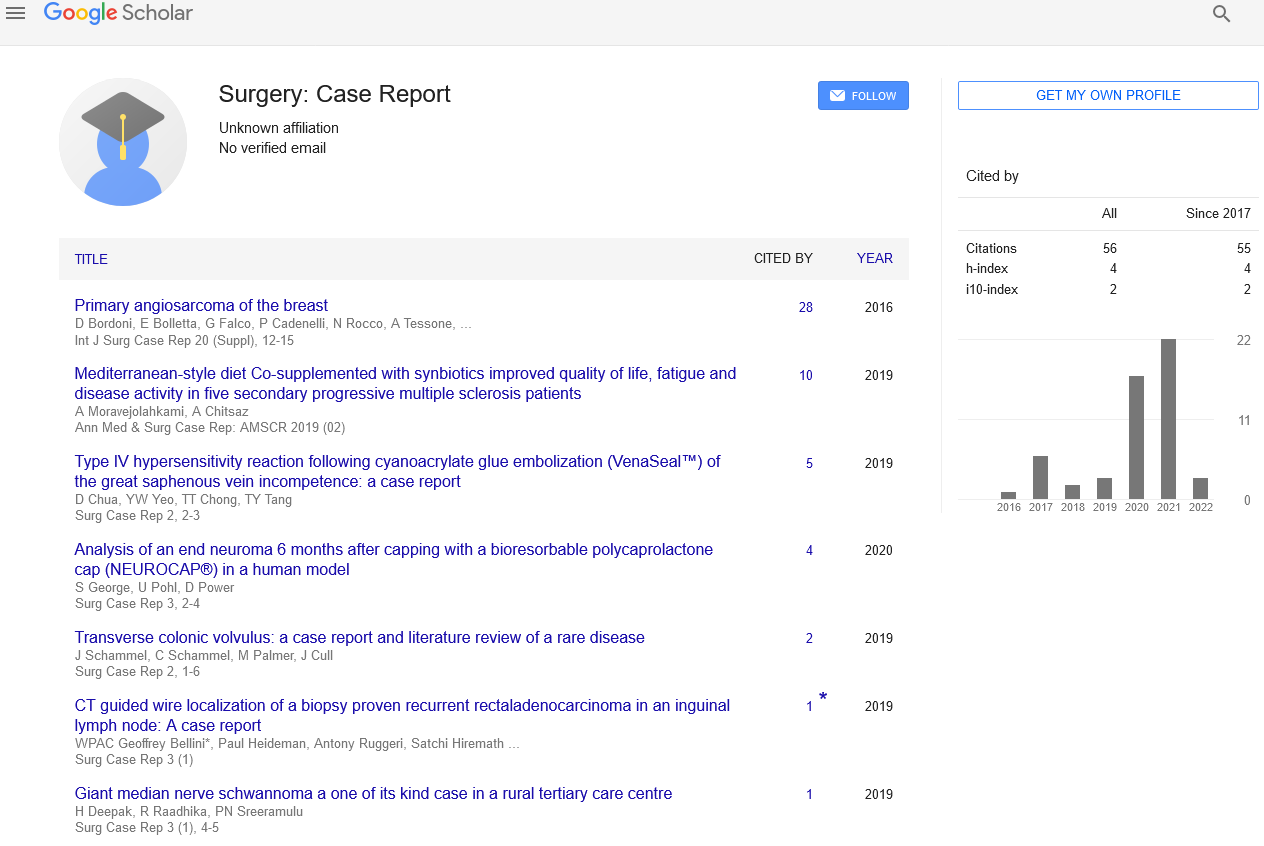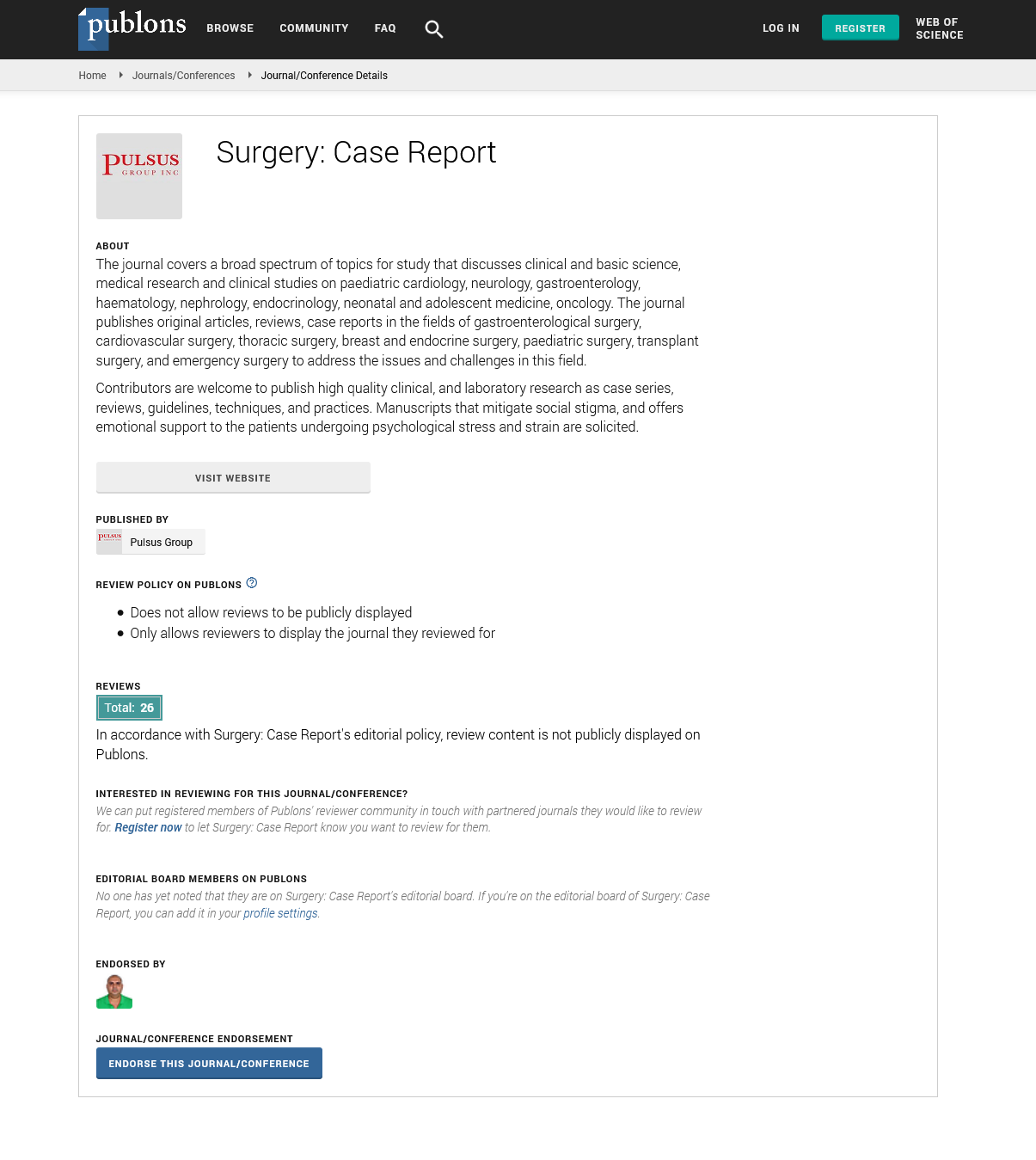Molecular Fluorescence Imaging to Assist Surgery
Received: 07-Jul-2021 Accepted Date: Jul 18, 2021; Published: 25-Jul-2021
Citation: Badigeru R. Molecular Fluorescence Imaging to Assist Surgery. Surg Case Rep. 2021; 5(4):1.
This open-access article is distributed under the terms of the Creative Commons Attribution Non-Commercial License (CC BY-NC) (http://creativecommons.org/licenses/by-nc/4.0/), which permits reuse, distribution and reproduction of the article, provided that the original work is properly cited and the reuse is restricted to noncommercial purposes. For commercial reuse, contact reprints@pulsus.com
Brief Report
The importance of surgery in the treatment of solid malignancies cannot be overstated. Sadly, based on the type of cancer, tumor-positive resection limits exist in 8–70% of instances. Intraoperative guiding is critical for surgeons since thorough excision of tumour tissue is required for longer survival and to conserve as much healthy tissue as feasible. In some circumstances, surgeons can employ ultrasonic imaging as an extra tool for intraoperative guidance in combination to visual (based on white light reflectance) and tactile input; however this tool is typically insufficient. As a result, for effective and secure tumour removal throughout oncological surgery, real-time intraoperative guidance is required. Since they do hardly give real-time intraoperative guidance, other imaging techniques such as x-ray, CT, or MRI are mostly employed for surgical planning or interim assessment. Near-infrared fluorescence imaging has showed promise for directing surgeons through complicated operations.
Fluorescence imaging is a technique that employs a specialized camera to capture light generated by a fluorescent contrast agent once it has been excited with the proper light source. For contact-free and real-time interrogation, all imaging equipment can be incorporated into a small open-field device or within laparoscopic or robotic tools. The fluorescent contrast agent is used to provide enough sensitivity and contrast to view the tissue or organ of relevance. Fluorescent agents emitting at wavelengths in the near-infrared range, between 650 and 800 nm, are more beneficial for medical purposes than those producing visible light.
Near infrared light may penetrate deeper through tissue with low scattering and low auto fluorescence over visible light. As a result, there seems to be a new trend over to using fluorescent contrast agents in molecular imaging. Only a couple authorized near-infrared fluorophores is accessible: indocyanine green and methylene blue. Indocyanine green is primarily used to assess blood flow, sentinel lymph node mapping, and imaging of liver tumours. Methylene blue was already tested for ureter, thyroid nodule, and neuroendocrine tumour imaging; nevertheless, based on non-specificity and low quantum yield, it is not routinely utilized in routine surgical treatment.
Apart from indocyanine green and methylene blue, non-fluorescent prodrugs 5-aminolevulinic acid and its derivate 5-aminolevulinic acid hexyl ester have been therapeutically authorized to detecting malignant gliomas and bladder cancer, correspondingly. Such pro-drugs stimulate the production of fluorescent protoporphyrin IX, which concentrates within tumour tissue. Nevertheless, inhomogeneous signals those are reliant on tumour grade, the lack of penetration depth, and photo bleaching are all disadvantages of fluorescence imaging using 5-aminolevulinic acid.
The move between structural and functional fluorescence imaging toward molecular fluorescence imaging with more selective fluorescent agents has recently emerged. Numerous aspects pertinent to oncological surgery might benefit from molecular fluorescent imaging, including the identification of concealed tumour lesions, evaluation of tumour margins and loco regional invasion, and focus on essential structures. Fluorescence molecular imaging has already demonstrated its ability to aid surgical procedures and enhance clinical outcomes.
Intraoperative fluorescent molecular imaging is critical in establishing unambiguous efficacy studies and is required to improve clinical practice. Following this stage, further substantial expenditures are anticipated in new tracers with enhanced pharmacokinetics and specificity, and more advanced image processing tools. The relative simplicity through which fluorescence imaging may be integrated into the practice of several different surgical and interventional situations is a major advantage of the technology, necessitating the need for centres of competence to teach users and raise awareness of the method.






